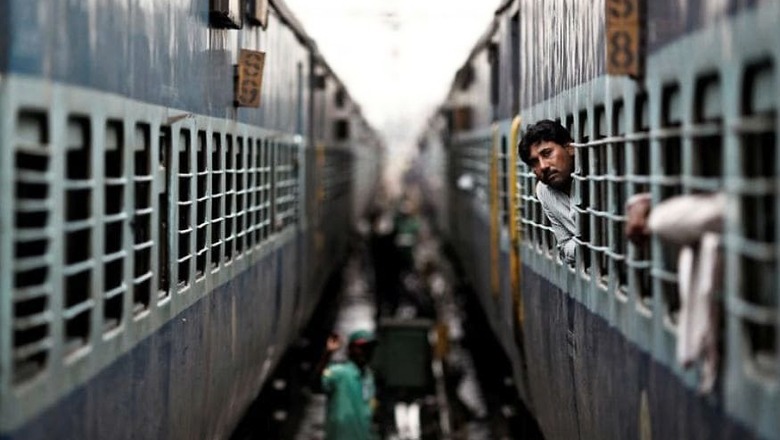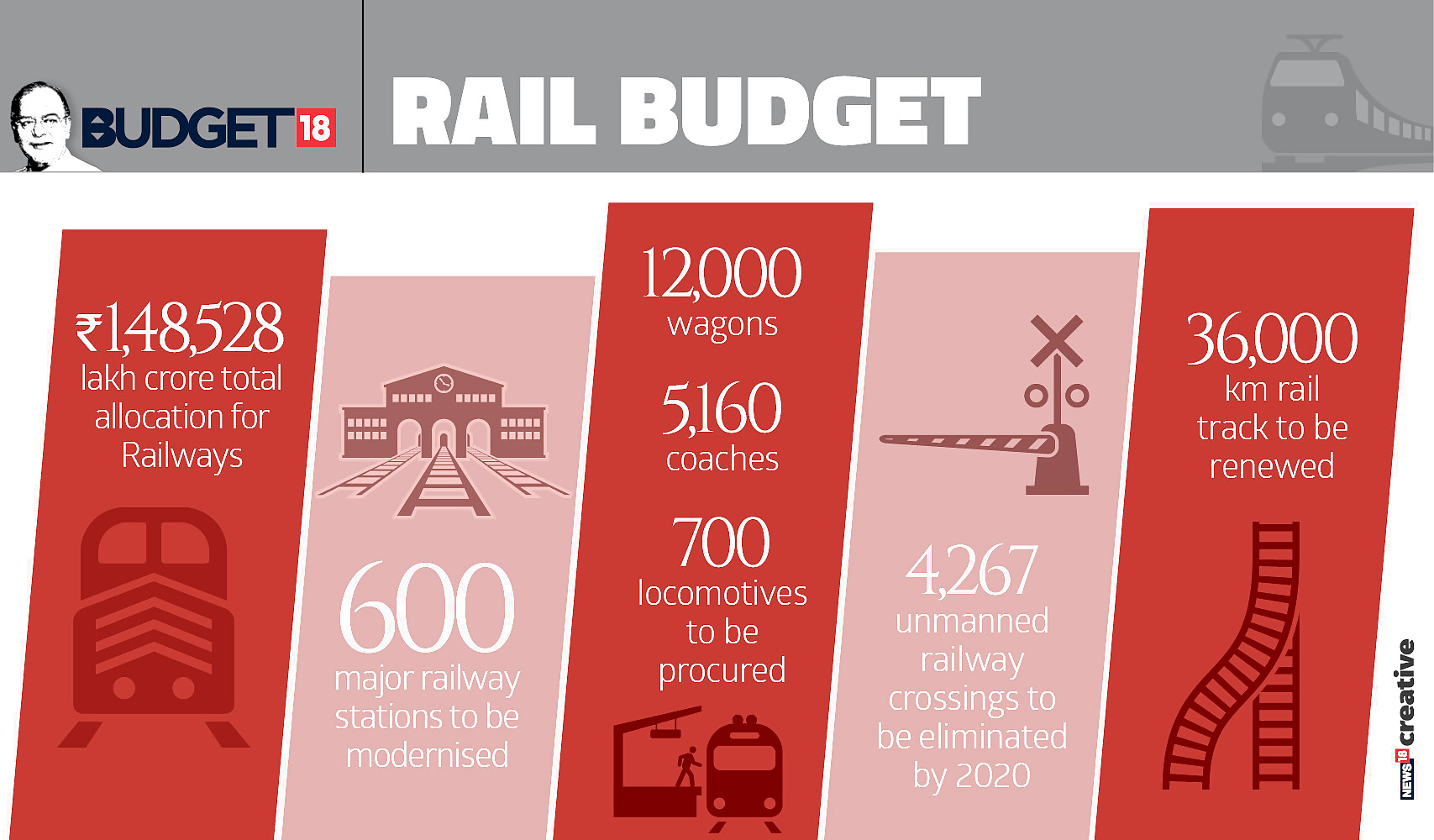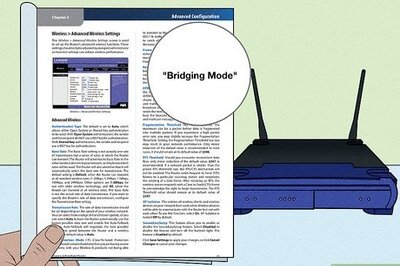
views
New Delhi: The Ministry of Railways, many believe, is jinxed. The fact that there have been eight ministers in the Rail Bhawan over the past eight years is testament to how difficult it is to hold the job. While some quit in the wake of devastating rail accidents, others were plagued by corruption scandals and a few exited while pursuing greater political goals. But the scale of work in the ministry is enough to overwhelm anybody.
Five months into his tenure as the Railway Minister, the challenges for Piyush Goyal are immense and if sources in the ministry are to be believed, the focus of the 2018 Railway Budget will largely be on passenger safety.
The spate of accidents under previous Railway Minister, Suresh Prabhu has put railway’s safety record under questioning. While Prabhu initiated some changes such as replacing old coaches with new and safer ones, and hiring more trackmen to manually patrol railway tracks, a much larger exercise will be needed to restore full faith. Many maladies such as trackmen serving as domestic help in the houses of senior Railway officers still persist.
While Prabhu had ordered the replacement of old ICF coaches with newer LHCs, experts believe it will take anywhere between 25-40 years for them to replace the entire fleet. However, Goyal’s ministry in 2017 set an ambitious target to completely switch over to LHB coach production from 2018-19.
The ministry has also set other ambitious targets such as elimination of all unmanned level crossings over the next 3-4 years. In the 2017-18 Union Budget, an exclusive fund called “Rashtriya Rail Sanraksha Kosh”(RRSK) was made with the corpus of Rs. 1 lakh crore over a period of 5 years, to boost safety-related work, including improving the safety of tracks, rolling stock and proliferation of other safety technologies and training of staff.
However, a balance sheet of the Railways from the 2016 Budget does not show promising signs. Last month, the ministry informed the Rajya Sabha that Rs. 63,063 crore was allotted to it for passenger safety in 2016-17 Union Budget. However, the actual expenditure was Rs. 55,918 crore while a total of Rs. 7,145 crore meant for passenger safety went unspent.
This reflects in how the Railways have consistently failed to meet its targets of track renewal for the last two years. In 2014-15, the track renewal target was 2,200 kilometers but the Railways exceeded that and renewed 2,424 kms.
In 2015-16, too, the Railway exceeded its target of 2,500 kms by renewing 2,794 kms. In 2016-17 and 2017-18, the ministry has, however, fallen behind its targets.
In 2016-17, the target for track renewal was 2,668 kms but the Railway fell short by 181 kms and renewed only 2,487 kms. In 2017, the shortfall was even bigger. The target the ministry had set for the financial year was an ambitious 3,600 kms of tracks to be renewed. However, the government informed the Rajya Sabha last month that by November, it had only managed to renew 2,007 kms.
The pace of modernisation and reforms within Railways will be another major challenge. While Prabhu had got the ball rolling, much work still needs to be done.
The Bibek Debroy Committee, E Sreedharan Committee, Anil Kakodkar Committee and Sam Pitroda Committee have all suggested sweeping changes in the Indian Railways. For the new minister, the speedy implementation of these reforms will be the key.
The Railways is still operating with 20th century management practices and infrastructure in the 21st century. According to infrastructure expert Akhileshwar Sahay, the skill level of over 50% Railway workers is “abysmally poor” and obsolete maintenance practices of the British era still persist.
The organization of the Railway structure in itself is becoming a challenge according to Sahay.
He added, “At an operational level, the Railway is organized in the most suboptimal manner. A decade ago, in order to improve operational efficiency, the Chinese railway abolished an entire tier at one go. On the contrary, the number of zonal railway headquarters and divisional railway headquarters has grown haphazardly in our country and the sole criteria of creating a new zone and division has been the political expediency and whims of the minister in-charge. Whenever there was an accident, the Railway Board honchos surrendered, meekly to safeguard their personal interest. And the obvious result is that the Railways, which was once the pride of the nation has seen a fall today. Freight has moved to high-capacity trucks on upgraded highways and passengers have shifted to using buses or flights. The decline now is both in percentage and absolute terms.”

A ‘BULLET TRAIN’ FILLED WITH POTENTIAL
Even if the ministry meets all its targets, there is still the task of making the ambitious ‘Bullet Train’ project a success. But according to experts, all signs point at the ‘Bullet Train’ project being a success in India.
Taiwan, a small island nation to the South East of China, has been operating the Shinkansen under the name of Taiwan High Speed Rail (THSR) since 2007. The THSR connects the nation’s capital Taipei with the Southern city of Kaohsiung and the 362 km journey takes just about an hour and a half. However, despite promising a comfortable ride through the island, the THSR is a financial disaster.
THSR had initially estimated that its ridership would be 2.4 lakh passengers a day by 2008. However, by 2014, the number was just over 1.3 lakh, almost half the expected number. Its inability to earn profits due to low ridership affected its ability to back the Japanese loan. This, in turn, drove up ticket prices, which further discouraged passengers. The Taiwanese government recently had to give the THSR a financial bailout to keep it afloat. The only example of a Japanese Bullet Train that isn’t run by the Japanese is widely considered to be a failure.
Yet, India is no Taiwan. Taiwan has a population of 2.3 crore people. For context, the combined population of Mumbai and Ahmedabad, the two cities that will be connected by India’s first Bullet Train, is 2.4 crore, a little more than the entire Taiwan.
The bullet train will connect Mumbai and Ahmedabad and will be linked by a total of 12 stations. The train will stop at Mumbai, Thane, Virar, Boisar, Vapi, Bilimora, Surat, Bharuch, Vadodara, Anand, Ahmedabad, and Sabarmati stations.
Critics of the Mumbai-Ahmedabad High Speed Rail (MAHSR) argue that it would be out of reach for the common Indian and would be the sole preserve of the rich who can afford air travel anyway.
However, infrastructure expert Sahay disagrees. “Between 2000 and 2005, a large number of so-called experts proclaimed to the world that an upcoming project by the name of ‘Delhi Metro’ would be a White Elephant. They said the common Delhiite would never use the Metro and instead prefer DTC buses. Today, Metro is not only the lifeline of Delhi but the problem is quite the opposite. There is a lack of coaches and trains to cater to so many riders. Any new technology is met with concerns. The Bullet Train will find enough passengers.”
On the financial front, too, India doesn’t have to worry as much as Taiwan did. The MAHSR project is a joint venture between Indian Railways and Japanese firm Shinkansen Technology. The total estimated cost is Rs. 1.08 lakh crore for the first rail link. Japan has agreed to give a soft loan to India, which will fund 81% of the entire project. According to the Ministry of Railways, such a loan from a body such as the World Bank would carry an interest of 5-7% with a repayment period of 25-35 years. However, the Japanese loan comes at an interest rate of 0.1% and India can repay it over a period of 50 years. The Indian government went as far as to say this loan was “tantamount to a grant”. The government of India will directly bear the rest of the cost.
The project is expected to generate employment as well since over 20,000 people will be employed during the construction of the rail link and they will be used for other similar projects in the future. Around 300 Indian Railway employees are currently being trained in Japan and an additional 4,000 will be trained at a High Speed Rail Training Institute at Vadodara, which will be operational by 2020.




















Comments
0 comment